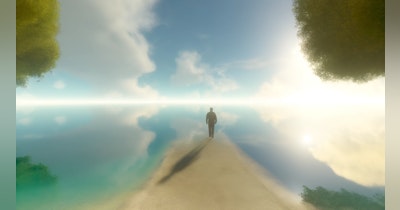Daylight Saving Time (DST) ended a few days ago. Surely you noticed. How much has your sleep pattern been disrupted since that Sunday when fiddling with all the clocks in your house resulted in ‘adding’ an extra hour to your day? Before we dive into the pros and cons of DST, remember that ‘Those who cannot remember the past are condemned to repeat it’ (often attributed to George Santayana). So, here’s a thumbnail history of DST.
In 1918 during World War I, the idea was hatched (in Germany) to reduce demand for electricity usage by adding sunlight to the end of the day. The US followed suit and DST here was born. But the human body operates on its circadian rhythm, whereas clocks are devices that measure time. No clock can add sunlight to a day. The revolution of the planet and the rising and setting of the sun are stubbornly unaffected by what human beings do with their clocks. Time, the Stoics remind us, is a feature of the cosmos that is quite obviously not up to us. So, it shouldn’t surprise anyone that the time switch in 1918 was so unpopular that the law was repealed the following year.
Lesson learned, America. Right? Nope. In December 1973 a national energy crisis led Congress to vote to extend daylight hours for two years. DST would cut demand for energy, they figured. President Richard Nixon signed the DST Energy Conservation Act into law the next day. Permanent DST wasn’t the wackiest idea about managing time back then. Paul Mullinax, a geographer who worked at the Pentagon, proposed putting the entire continental US on a single time zone. ‘USA Time’ would reach from Maine to California, eliminate jet lag, and standardize TV schedules. Mullinax’s scheme even won support from US Representative Patsy Mink of Hawaii. ‘The human being is a very adaptive animal,’ Mullinax mused. ‘There is no reason we have to be a slave to the sun.’ Mullinax figured we can make the sun do our bidding since we are Time Lords (forgive me, fans of Doctor Who).
A problem quickly emerged: that darn lazy sun didn’t rise early enough for children trying to get safely to school. A car struck a 6-year-old girl and broke her leg when she was walking to school in Virginia on January 7, 1974. Two more students were hurt in February. In the weeks after the change, eight kids in Florida were killed in traffic accidents. Schools across the country delayed start times until the sun came up. Florida’s governor, Reubin Askew, asked Congress to repeal DST. So, while 79% of Americans approved of the change to DST in December 1973, the New York Times reported that approval dropped to 42% three months later. October 5, 1974, President Ford signed into law a bill to end the DST experiment. Standard Time (ST) was restored on October 27. Energy savings, a House panel noted, ‘must be balanced against a majority of the public’s distaste for the observance of DST.’ Moreover, studies since then have found little to no cost savings from DST.
Research has shown both heart attacks and fatal car accidents increase after clocks ‘spring forward’ an hour in March. Children are forced to go to school in the dark, with disastrous consequences. So, why not make DST permanent and never ‘fall back’ an hour in November? Enter US Senator Marco Rubio’s Sunshine Protection Act of 2023 for the 118th Congress. Proponents of Rubio’s bill believe DST year-round would solve the problems of having DST only from mid-March to early November.
The American Academy of Sleep Medicine disagrees: ‘Current evidence best supports the adoption of year-round ST, which aligns best with human circadian biology and provides distinct benefits for public health and safety.’ The proposal of permanent ST has been endorsed by more than 20 medical, scientific, and civic organizations, including the American College of Occupational and Environmental Medicine, the National Parent Teacher Association, the National Safety Council, the Society for Research on Biological Rhythms, and the World Sleep Society.
When our internal clocks are offset from the solar day-night cycle by even one hour we develop what sleep experts call ‘social jet lag.’ Studies have shown social jet lag increases the risk of metabolic disorders such as diabetes, raises the risk of heart disease and stroke, and worsens mental health disorders such as depression. Social jet lag messes with the digestive and endocrine systems, shortens our sleep duration, and can even reduce life expectancy.
DST induces later sleep timing, which is associated with more substance use and obesity. DST is also associated with morning sleepiness, which contributes to accidents, poor work productivity, and poor school performance. In contrast, ST gives us more morning light, which promotes earlier sleep timing that is more conducive to school and work start times.
A 2003 study found getting one hour less sleep for two weeks had the same effect on thinking and motor skills as going without sleep for two full nights. Reducing sleep by 90 minutes from the recommended 7 to 8 hours for adults altered the DNA of immune cells and boosted inflammation, a key cause of chronic disease, according to another study.
Permanent DST would make the chronic effects of any sleep loss more severe, not only ‘because we have to go to work an hour earlier for an additional 5 months every year but also because body clocks are usually later in winter than in summer with reference to the sun clock,’ according to a statement from the Society for Research on Biological Rhythms. ‘The combination of DST and winter would therefore make the differences between body clocks and the social clock even worse and would negatively affect our health even more,’ the authors concluded.
Professor Ken Wright, Associate Chair for integrative physiology at University of Colorado Boulder, admits that we don’t have any studies that have, say, compared 10 years of DST to 10 years of ST. But he notes we do have studies that compare people who live on the western edge of a time zone to people living on the eastern edge of the adjacent time zone. These two groups are essentially in the same region, with the sun coming up and going down for them about the same time. But the one on the western edge has the sun setting an hour later according to the clock on the wall, much like what would happen with DST. These studies have found that people on the western edge of the time zone slept less, were more likely to be overweight and obese, and had higher risks of diabetes, heart attacks and cancer.
How is all this science stuff relevant to Stoicism? Well, Stoics believe that virtue, also known as wisdom, requires knowing. ‘Knowledge’ translates the Latin term scientia. So, Stoics heed what science tells us about circadian biology, sleep studies, environmental and occupational medicine, integrative physiology, and public health and safety. For example, the Stoic Posidonius of Rhodes was a polymath. He wrote on physics, meteorology, and astronomy. He wrote on geology, seismology, and mineralogy. He studied botany. Study of hydrology led him to hypothesize that yearly tidal cycles synchronized with the equinoxes and solstices. Posidonius also wrote on anthropology and natural history. He composed an influential geographic treatise on the lands of the Celts. Another example is Seneca’s Natural Questions. This work explores connections between a wide range of natural phenomena (physics) and ethics from a Stoic perspective. Thus, from antiquity Stoics recognized the value of science for attaining wisdom, including being wise about time.
‘The United States has tried permanent DST twice before and ended it early. The UK tried once before and ended it early. Russia tried it once, so did India and ended it early,’ Dr. Elizabeth Klerman, a professor of neurology in the division of sleep medicine at Harvard Medical School, said. ‘I think we should learn from history.’ Amen. Ever since the 1960s Hawaii and Arizona, where I live half the year, learned from history by keeping ST year-round.
We can also learn from Stoicism. In Marcus Aurelius: A Guide for the Perplexed (Bloomsbury [Continuum], 2012) I discuss the themes of time, transience, and eternity. The Stoic emperor borrows from Heraclitus the image of the rushing river as a symbol of existence. Marcus reminds himself that all that happens has happened before. He consoles himself with the thought that time quickly erases even what seems hugely significant now. Marcus urges himself to make the most of the only thing any of us really have: the present moment. You can’t lose what you don’t have. No one has the future. The past is gone. Therefore, all you have is the present. So, make the most of now, knowing you are limited and won’t live forever. You might not be alive in fifteen years. Or three. So, make the most of every hour of daylight every season of the year. Don’t be afraid to work, read, or journal when it’s dark outside. Stoics treat time as a precious gift that must not ever be taken for granted.
Daylight cannot be saved because it is a function of the sun, the season, and your distance from the equator. Daylight cannot be saved by resetting a clock. Those suffering from Seasonal Affective Disorder (SAD) can turn to Stoic therapies to help manage that malady, too. We are not Lords of Time. Time is our master. But Stoic wisdom teaches that we can work to gain greater mastery of ourselves.
SOURCES
https://www.cnn.com/2022/11/06/health/permanent-daylight-savings-health-harms-wellness/index.html
https://www.colorado.edu/today/2022/03/28/why-permanent-daylight-saving-time-bad-idea









